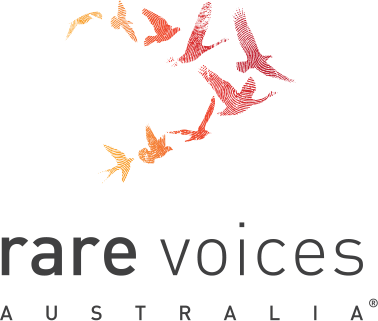Developmental Anomalies
Acalvaria
IMPORTANT INFORMATION
The information on the Rare Awareness Rare Education (RARE) Portal is intended for educational purposes only and does not replace professional advice.
Rare diseases typically display a high level of symptom complexity and variability. Individuals diagnosed with the same rare disease may be impacted differently and each person’s experience is unique. Please seek support from qualified healthcare professionals to learn more about the most suitable care and support options for you.
For more information on this rare disease, please refer to the Genetic and Rare Diseases (GARD) Information Center – Acalvaria.1
There are currently no known organisations in Australia specifically for this rare disease. If you know of any rare disease organisation/s supporting people living with Acalvaria in Australia, please let us know via the Contribute page. If you are interested in starting an Australian organisation for people living with Acalvaria, please see Engaged, Ethical and Effective: A Guide for Rare Disease Organisation Leaders in Australia.
If you are aware of any additional information that may benefit stakeholders with an interest in this page, or if you notice any broken links or inaccurate information, please let us know via the Contribute page.
Quick Page Search:
Emergency Management | Clinical Care Guidelines | Synonyms | Summary | Personal Stories | Symptoms | Cause/Inheritance | Diagnosis | Treatment | Clinical Care | Research | Rare Disease Organisation(s) | Support Services/Resources | Mental Health | Other | References
Emergency Management
There may be special considerations for the emergency management of individuals living with Acalvaria presenting to emergency departments.
Clinical Care Guidelines
Clinical Care Guidelines for Acalvaria are yet to be developed in Australia.
Synonyms
Primary Acalvaria ; Acrania
ORPHA:945
ICD-11: LA00.0Y Other specified anencephaly
Summary
Acalvaria is a birth defect (congenital condition), in which there is abnormal development of the top of the skull (the calvaria), causing the flat skull bones of the brain, the membrane under the skull bone (dura mater), and scalp muscles to be absent.1,2 There is still an intact layer of skin over the brain tissue (parenchyma).2,3 The size of the area that is missing can vary between individuals2 and can range from partial to complete absence.4 The base of the skull and facial bones are usually unaffected, and facial features appear normal.1,2 The cause of Acalvaria is currently unknown.1,2 There are currently not many cases of Acalvaria reported in the medical literature.3-6 This condition has sometimes been observed to be fatal at birth, but not in all cases.4-6
Personal Stories
Acalvaria varies between individuals, and each person’s experience is unique.
If you would like to share your personal story with Rare Voices Australia and have it included on the RARE Portal, please visit Rare Voices Australia: Share Your Story.
Symptoms
Features that have been associated with Acalvaria are listed on Human Phenotype Ontology (HPO): Acalvaria; however this may not be observed in every individual with this condition.
It is best to speak to your medical team to learn more about the symptoms and features of Acalvaria.
Cause/Inheritance
The cause for Acalvaria is currently unknown.1,2
Diagnosis
Prenatal diagnosis may be made using ultrasonography, and magnetic resonance imaging (MRI) is used for confirmation, as the condition can be mistaken for anencephaly or encephalocele.2
Neuroimaging, such as cranial ultrasonography, noncontrast computerized tomography (CT) and MRI, may be performed on newborns.4
Treatment
It is best to speak with your medical team to learn about possible treatments and management strategies for Acalvaria. Treatment may be limited due to the severity of this condition.
Clinical Care
Medical professionals involved in the treatment or management of Acalvaria may include general practitioners (GP), paediatricians and neurosurgeons. However, the need for different specialists may change over time and may extend beyond those listed here.
Research
Please visit Australian Clinical Trials to learn about clinical trials for Acalvaria in Australia; there may not be any clinical trials currently available.
Information regarding clinical trials related to Acalvaria in other countries can be found at ClinicalTrials.gov; there may not be any clinical trials currently available.
It is best to discuss your interest in any clinical trials with your medical team to suitability and eligibility.
Rare Disease Organisation(s)
There are currently no known organisations for Acalvaria in Australia. If you are aware of any Acalvaria organisations in Australia, please let us know via the Contribute page.
Genetics Alliance Australia (GAA), Genetic Support Network of Victoria (GSNV) and Syndromes Without A Name (SWAN) Australia may be able to provide some support for families and individuals affected by an undiagnosed or rare genetic condition for which there is no disease specific organisation in Australia.
Please note that RVA does not necessarily monitor or endorse each group/organisation’s operational governance.
Support Services/Resources
Please visit the National and State Services pages.
Mental Health
Please visit the ‘Mental Health’ sections listed on the National and State Services pages.
Other
Further information on Acalvaria can be found at:
References
- Genetic and Rare Diseases Information Center. Acalvaria. Accessed September 20, 2022. https://rarediseases.info.nih.gov/diseases/361/acalvaria
- Acalvaria. Accessed September 20, 2022. https://www.orpha.net/consor/cgi-bin/OC_Exp.php?lng=EN&Expert=945
- Harris CP, Townsend JJ, Carey JC. Acalvaria: A Unique Congenital Anomaly. Am. J. Med. Genet. [Internet] 1993;46(6):694-9. Available from: https://doi.org/10.1002/ajmg.1320460620
- Faizan R, Tomar M, Usmani Y. Primary acalvaria an orphan disease: Case report and review of literature. J Pediatr Neurosci [Epub ahead of print] [cited 2023 Oct 31]. Available from: https://pediatricneurosciences.com/preprintarticle.asp?id=368796
- Hawasli AH, Beaumont TL, Vogel TW, Woo AS, Leonard JR. Acalvaria. J. Neurosurg. Pediatr. [Internet] 2014; 14(2):200-2. Available from: https://doi.org/10.3171/2014.5.PEDS13688
- Ouma JR. Acalvaria – report of a case and discussion of the literature. Br. J. Neurosurg. [Internet] 2019; 33(2):224-225. Available from: https://doi.org/10.1080/02688697.2017.1322685
Page Last Updated
31/10/2023 10:50
